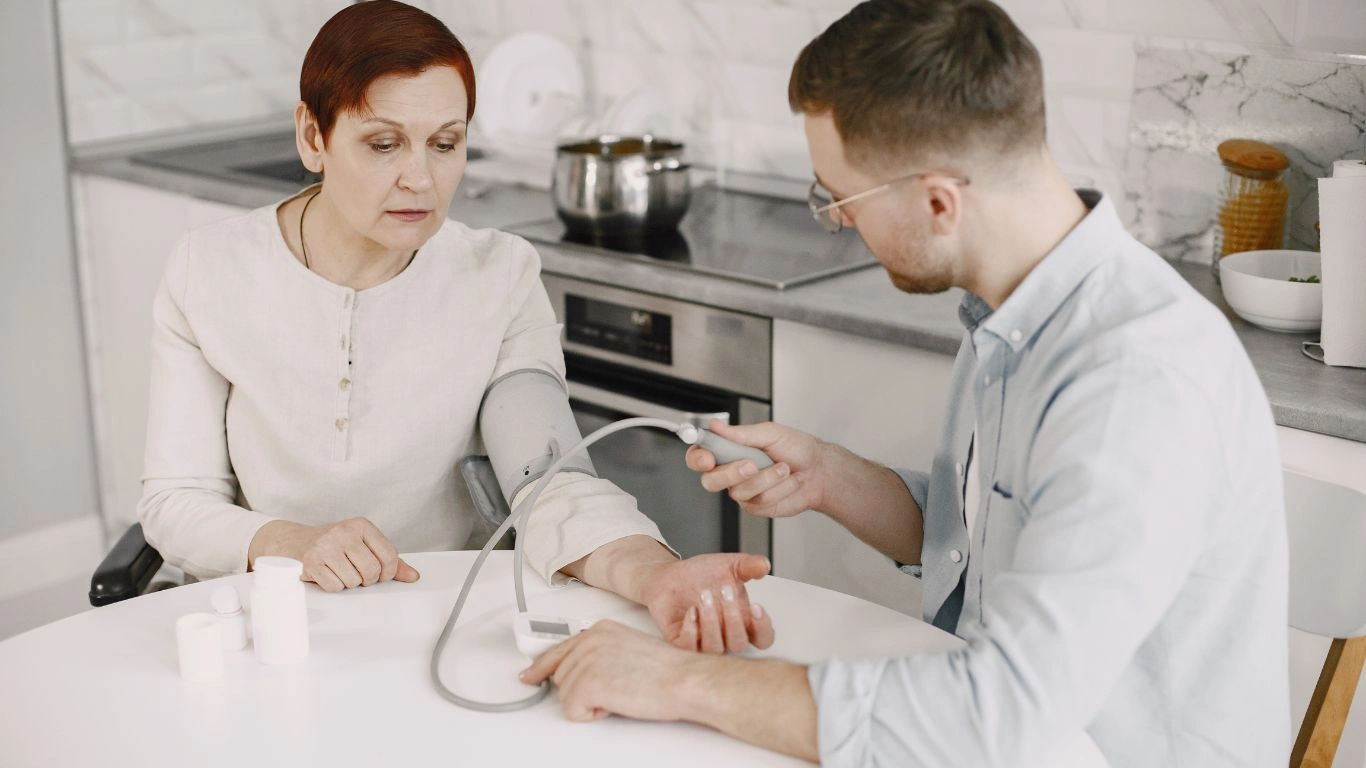Smart & Safe Weightlifting Tips for Hypertension That Actually Work
When you think about lifting weights, the first thing that pops into your mind probably isn’t hypertension. But as an internal medicine doc who’s spent years managing blood pressure in patients from all walks of life, I can’t count the number of times I’ve been asked, “Is it safe to lift weights if I have high blood pressure?” The short answer? Yes—but with a big asterisk. That’s exactly what we’re diving into today. If you’ve been hunting for safe weightlifting tips for hypertension, you’re in the right place. We’re going to unpack the real talk about lifting, risks, benefits, and how to do it smart—no fluff, just practical guidance straight from clinic to gym.
Why Strength Training Deserves a Spot in Your BP Toolbox

I know cardio tends to steal the spotlight when it comes to managing hypertension. But here’s the kicker: strength training isn’t just safe—it can actually help control blood pressure. Research backs this up, and in my own practice, I’ve seen patients improve both systolic and diastolic values after incorporating consistent resistance work. Not to mention the gains in mobility, bone density, and metabolism that come along for the ride.
That said, not all weightlifting is created equal—especially when high blood pressure is part of the equation. Done incorrectly, lifting can spike your BP in the short term, which isn’t something we want. That’s why we need a strategy, not just dumbbells and willpower.
How Weightlifting Affects Blood Pressure: The Real Talk

Alright, let’s nerd out for a second. When you lift, your body’s natural response is to increase blood pressure temporarily—especially if you’re holding your breath (more on that later). It’s totally normal. But in people with uncontrolled or poorly managed hypertension, that spike can be risky. I’m talking nosebleeds, headaches, or in severe cases, cardiovascular strain.
But here’s the good news: those spikes are temporary. Over time, regular strength training—done right—can lower resting blood pressure. So while there’s a short-term bump, there’s a long-term payoff. Kind of like investing: the market goes up and down, but if you stick with it wisely, your health portfolio wins.
Safe Weightlifting Tips for Hypertension

1. Get the Green Light First
First and foremost—talk to your healthcare provider before you start throwing plates around. I can’t stress this enough. As someone who reviews labs, medications, and risk profiles daily, I’ve caught more than a few red flags that would’ve made a gym injury or hypertensive crisis likely.
2. Focus on Controlled Movements
Go slow. Seriously. Fast, jerky movements are not your friend here. Controlled tempo reduces your risk of blood pressure spikes and helps you maintain proper form, which is huge for joint safety too.
3. Avoid the Valsalva Maneuver
This one’s a biggie. Holding your breath while pushing a heavy load (aka the Valsalva) can cause a dangerous spike in BP. Exhale during exertion, inhale as you reset. If that sounds too simple to matter, trust me—I’ve seen this alone make a major difference in BP control during strength sessions.
4. Start Light—Like, Lighter Than You Think
I know it can be tempting to match the person next to you or pick up where you left off in your 20s. But easing into it is smarter. I usually recommend starting with 50-60% of your 1-rep max if you’ve had experience, or just bodyweight resistance if you’re new.
- Focus on 2–3 sets of 10–15 reps
- Use weights you can lift with proper form
- Rest for 60–90 seconds between sets to allow your BP to recover
5. Track Your Numbers
This is where your inner data nerd can shine. Keep a log of your workouts and your blood pressure readings. Many of my patients notice patterns—like which lifts elevate them a bit more, or what time of day they feel stronger with less BP fluctuation. That kind of insight is gold.
6. Stay Hydrated and Don’t Skip the Warm-Up
Seems basic, but dehydration and cold muscles are a recipe for sudden spikes and injury. Five minutes on a treadmill or rowing machine can do wonders for your vascular readiness. Pair that with some dynamic stretches and you’re good to go.
The Doctor’s Take: What I Tell My Own Patients
I’ll tell you what I tell my own patients: don’t be afraid of the weights—just be intentional. Strength training isn’t off-limits with hypertension; it’s just a little more nuanced. With a smart approach and regular monitoring, you can build muscle and protect your heart at the same time. And honestly? It feels empowering to take control like that.
In the next section, I’ll go deeper into what a weekly weightlifting plan might look like for someone managing hypertension, along with some common mistakes and how to avoid them.
Building a Weekly Lifting Routine for Hypertension

Now that we’ve covered the why and how, let’s talk about the what—like, what does a safe weightlifting routine for hypertension actually look like in real life? In my clinic, when I sit down with patients who are new to resistance training or just getting back into it, we sketch out something that’s simple, doable, and safe. We’re not aiming for powerlifting trophies here. We’re after strength, stamina, and steady blood pressure numbers.
Here’s a general framework I often recommend:
Frequency: 2–3 Days a Week
Think every other day. Your muscles—and your blood vessels—need time to recover. More isn’t always better, especially in the beginning. Give your body the grace it deserves while it adapts.
Duration: 30–45 Minutes Per Session
That’s enough to get a full-body workout without overdoing it. You’re not chasing fatigue; you’re chasing consistency.
Focus: Full-Body Compound Movements
Compound exercises hit multiple muscle groups and give you more bang for your buck. They’re efficient and safer when done with proper form.
- Squats or sit-to-stand (bodyweight or light dumbbells)
- Wall push-ups or incline push-ups
- Seated rows or resistance band pulls
- Leg press or step-ups
- Shoulder presses with light dumbbells
And let’s not forget the cool-down. Just 5–10 minutes of gentle stretching or light walking keeps things flowing and prevents that post-lift spike in blood pressure. That cool-down time? It’s sacred in my book.
Common Mistakes That Can Raise BP in the Gym

I’ve seen it too many times—folks come into the gym with good intentions, only to unknowingly sabotage their progress. Let’s break down a few traps I regularly help patients avoid:
1. Going Too Heavy Too Soon
This is the classic gym blunder. Ego lifting may look impressive for a hot minute, but it spikes BP and increases the chance of strain or injury. Especially if you’re older or new to lifting, start conservatively—think 5 to 10 lbs dumbbells, not barbells with multiple plates.
2. Poor Breathing Technique
Remember what I said about the Valsalva? Still stands. I’ve had patients who were otherwise very fit, but their BP readings told a different story simply because they were holding their breath mid-lift. It’s easy to forget—so make it a habit: exhale as you lift, inhale as you release.
3. Skipping the Warm-Up (and Cool-Down)
Yep, it bears repeating. Warm-ups increase blood flow gradually so your heart and vessels aren’t shocked by sudden effort. Cool-downs do the opposite—they help ease your body back to baseline. Both are non-negotiables in safe training.
4. Ignoring How You Feel
I tell my patients: listen to your body like you’d listen to a stubborn toddler—it will let you know when something’s off. Dizziness, chest tightness, headaches during or after lifting? Stop and check your numbers. Don’t push through; check in.
Smart Modifications That Make All the Difference

Not everyone has access to fancy gym equipment, and honestly, you don’t need it. One thing I love is adapting traditional moves for safety and comfort—especially for folks managing chronic conditions like hypertension. Here are a few ways to tweak your workouts without losing effectiveness:
- Use Resistance Bands Instead of Dumbbells
They’re easier on the joints, offer more control, and lower the risk of overloading muscles suddenly. - Work Out Seated or Supported
Seated curls, presses, or rows give extra stability and help reduce the dizziness some folks get when changing positions too quickly. - Elevate the Head When Lying Down
If you’re doing chest presses or core work, try keeping your head and upper back slightly elevated. It minimizes pressure shifts that can trigger BP spikes. - Take Longer Rests Between Sets
There’s no rush. I often suggest 90–120 seconds if your heart rate or BP tends to climb quickly. Sip water, take a breath, and get ready for the next round.
Even small tweaks like these can make a big difference in how you feel during and after your session. As one of my older patients said, “I feel like I’m working with my body now, not against it.” That’s the vibe we’re going for.
The Role of Medications in Your Training Game Plan
One more thing—and this is huge. If you’re on blood pressure meds (which, let’s be real, most of my patients are), you’ve got to factor that into your workout plan. Beta-blockers, for instance, can blunt your heart rate response, so you may not feel as winded even if your BP is elevated. ACE inhibitors or diuretics can alter hydration or electrolyte balance, which impacts how you feel during exertion.
So what do I recommend? Keep a small notebook or use your phone to log three things:
- When you took your meds
- What your BP was before/after lifting
- How you felt (lightheaded, strong, tired, etc.)
That kind of feedback loop helps you, your trainer, and your doc (me or someone like me!) keep your regimen safe and effective. I’ve even tweaked med timing for a few patients who wanted to work out early mornings but kept crashing halfway through warm-ups. It’s all about individualizing.
We’ll keep building on this foundation in the next section—covering nutrition, hydration, and lifestyle tricks that boost your strength while keeping that BP in check.
Eating to Support Strength and Blood Pressure Control

If you’ve been lifting smart and checking your blood pressure, that’s already a win. But if your diet isn’t dialed in, you might be paddling upstream. I always tell my patients that exercise and nutrition are like two sides of the same coin—especially when managing hypertension. The food you eat can either help your body recover from resistance training or undo your hard work entirely.
So, what does an ideal diet look like when you’re juggling safe weightlifting tips for hypertension with real life (and maybe a tight schedule)? You don’t have to go full kale-and-quinoa overnight. Here’s what I usually recommend, based on what actually works for patients—not just what’s trending online:
1. Prioritize Potassium-Rich Foods
Potassium helps balance out sodium and supports vascular relaxation. Think bananas, sweet potatoes, beans, and leafy greens. I tell my patients: if it grew from the ground and isn’t fried, it’s probably fair game.
2. Moderate Your Salt, Don’t Go Crazy
We’re not aiming for salt-free cardboard meals here. Just be mindful. The American Heart Association recommends less than 1,500 mg a day for those with hypertension, which is roughly 2/3 of a teaspoon. Check labels, skip processed stuff when you can, and cook more at home—easier to control everything that way.
3. Lean Into Lean Protein
Your muscles need building blocks, especially if you’re lifting. Go for chicken, fish, tofu, beans, or low-fat Greek yogurt. Bonus: these foods are naturally lower in sodium than most processed meats.
4. Don’t Forget the Fiber
Whole grains like quinoa, oats, brown rice—not only do they keep blood sugar stable, they help with satiety and gut health. Fiber-rich diets have also been associated with lower blood pressure in multiple studies (NIH).
Nutrition is a long game. I always remind folks to aim for progress, not perfection. Start by tweaking one meal at a time. Trust me, those little changes stack up fast.
Hydration: The Overlooked Secret Weapon

Honestly, I can’t talk about safe lifting and blood pressure without talking about hydration. It’s the unsung hero of your workout. Dehydration can elevate your heart rate, reduce blood volume, and mess with your electrolyte balance—all of which are bad news if you’re hypertensive and training.
Here’s my go-to hydration checklist for my patients:
- Drink at least half your body weight in ounces each day (e.g. 150 lbs = 75 oz)
- Increase intake before and after workouts—your body loses more during exertion than you think
- Avoid sugary sports drinks unless you’re training super hard or sweating a ton
I always keep a bottle nearby during consults and during my own workouts. It’s just a habit now. And if you’re on diuretics? Extra hydration is even more important. Don’t wait until you feel thirsty—by then, you’re already behind.
Stress, Sleep, and Strength: The Trifecta
You can follow the perfect lifting routine and eat like a nutritionist, but if you’re sleeping 4 hours a night and feeling chronically stressed, your blood pressure will keep fighting you. I’ve had patients do everything “right” except manage stress—and it held them back more than they realized.
Manage Stress Without Ditching the Gym
One of my favorite tricks is to combine low-intensity exercise with breathing exercises. After your strength session, take five minutes on the treadmill at a slow pace while focusing on deep breathing. It sounds simple, but it works wonders for heart rate recovery and lowering post-exercise BP.
Sleep: The Recovery Superpower
Aim for 7–8 hours. Poor sleep raises cortisol and can interfere with both blood pressure regulation and muscle repair. Set up a wind-down routine. No screens 30 minutes before bed. Magnesium-rich snacks like almonds or dark chocolate can also help relax the nervous system.
And if you’re tossing and turning every night? Bring it up with your doctor (or with me, if you’re one of my patients). Sleep apnea is a common culprit, especially in folks with resistant hypertension.
Your Mindset Matters More Than You Think
Let’s talk real talk for a second. I’ve met people who were terrified to start lifting because they’d read horror stories online or were told by outdated advice to “just stick to walking.” But here’s the thing: knowledge is power, and so is confidence. When you have a plan, support, and awareness of your body, you’re not just lifting weights—you’re lifting your life.
In my own fitness journey (yep, doctors lift too!), strength training became a grounding routine. I’m not chasing PRs or Instagram flexes. I’m training to be able to move well, keep up with life, and stay sharp for my patients. That’s a huge part of why I care about this topic so much. If I can help even a handful of people train smarter and safer with hypertension, then I’ve done my job.
Final Thoughts: It’s About Progress, Not Perfection
If you’ve made it this far, you already care enough to take your health seriously—and that’s half the battle. Safe weightlifting with hypertension isn’t about playing it safe forever; it’s about building up strength intelligently. With the right mindset, solid habits, and medical guidance, it’s absolutely possible to thrive—not just survive—with high blood pressure.
So whether you’re just starting out, getting back on track, or helping a loved one navigate their fitness path, I hope this article gave you practical tools and encouragement from someone who walks this road with patients every day.
References
Disclaimer
This article is intended for informational purposes only and is not a substitute for professional medical advice, diagnosis, or treatment. Always consult your physician or a qualified health provider regarding any questions you may have about a medical condition or before starting any exercise program, especially if you have hypertension or other chronic health issues.

Dr. Gwenna Aazee is a board-certified Internal Medicine Physician with a special focus on hypertension management, chronic disease prevention, and patient education. With years of experience in both clinical practice and medical writing, she’s passionate about turning evidence-based medicine into accessible, actionable advice. Through her work at Healthusias.com, Dr. Aazee empowers readers to take charge of their health with confidence and clarity. Off the clock, she enjoys deep dives into nutrition research, long walks with her rescue pup, and simplifying medical jargon one article at a time.






